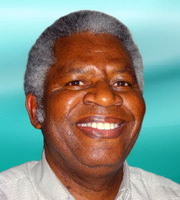by Dr. Tal Ben-Shahar and Megan McDonough
Yoga and positive psychology are not usually used in the same sentence. Positive psychology is, after all, a science—and a recent one at that. It uses research and data to come to conclusions about what makes people flourish. Yoga is a practice that is thousands of years old and although some would call it a science, it is not defined as such in western academia. Like positive psychology, the practice is meant to elevate. What would it look like to combine the body-centered approach of yoga postures with the science-based approach of positive psychology?
Defining Yoga
The word “yoga” comes from the Sanskrit root yuj, which means “to join” or “to yoke.” Basically, the practice is an integration of all aspects of self.
A great definition of yoga came from Amrit Desai, a yogi who said, “The practice is when what you think, say, and feel are aligned.” Interestingly enough, this is similar to how Gandhi described happiness when he said, “Happiness is when what you think, what you say, and what you do are in harmony.”
This connection of aligned thinking and action is very important, and we’ll come back to it in a bit.
As for yoga, many equate it with the physical practice. The word conjures images of extremely flexible people in amazing postures. However, classical yoga describes an eight-fold path that spells out guidelines for living a meaningful and purposeful life. One of those eight paths is “Asana”, the Sanskrit word for physical postures. These postures are designed for physical well-being and are used for developing concentration, attention, and awareness in preparation for meditation.
The Effects of Yoga
You can see in magazines today the popular image of the very flexible yoga practitioner. Yet, the physical flexibility is nothing compared to the mental flexibility that yoga builds. There are two aspects of yoga that cannot be captured in a fancy photo: being mindful of experiencing the posture, and expanding your awareness beyond what first captures your attention.
In the physical practice of yoga, one focuses attention on the very real and tangible body (Where are my arms and legs in this posture? Am I holding unnecessary tension in my neck? What is that strange sensation in my shoulder?) Then the practitioner expands awareness into even finer layers, perhaps being aware of the breath, of attitudes and thoughts, emotions arising, the interplay between the ground and the feet, or the relationship to the teacher or other students. In this way, the practitioner connects body and mind, consciously paying attention.
We can expand this directed attention to focus on our psychological state in addition to our physical state. At Wholebeing Institute, we call this practice Yogaspire.
Yogaspire
Let’s come back to the idea of aligning thought and action. Research in psychology points to a reciprocal relationship between attitudes and behaviors, and it seems clear that attitudes affect behaviors. We usually seek the company of those we find engaging and avoid those who fail to excite us. If I like self-help books and find cooking tedious, I am more likely to gravitate towards one section of the bookstore rather than another. A deep love of golf is likely to take me to a driving range, whereas fear of rough physical contact is likely to drive me away from the football field.
The relationship between attitudes and behaviors goes beyond our likes and dislikes, influencing the course of action we choose. Psychological research and observations point to a reciprocal relationship between attitudes and behaviors: not only do our thoughts affect our actions, what we do also affects how we think.
Attitude (in the mind) and behavior (through the body) creates a self-reinforcing loop. Yogaspire makes the link between the two more explicit by being mindful of what one is doing (physical postures) while consciously cultivating a desired state of mind (psychological state).
For example, in the mountain pose in yoga, we can be aware of our physical body standing strong and tall, feeling our heart lifting up, and we can extend that sensation to include our psychological state by mentally repeating “I am grounded and strong.”
How you sit, stand, walk, and use your physical body has an impact on your psychological state. Does your physical position right now give you some clues to your psychological state? What happens when you change your posture, purposely picking a position that for you epitomizes the desired state?
Research
What does research say about how a yoga pose like mountain affects our psychology? According to Amy Cuddy, a researcher at Harvard University, even a quick two-minute pose has a direct impact on you—both in terms of hormonal changes (attitudes in the mind) and on the subsequent behavior (actions through the body).
In this study,* participants’ mouths were swabbed at the start of the protocol to test saliva for the hormone testosterone, which is associated with power and confidence, and cortisol, the stress hormone. After the swab, they were asked to strike either a low-power pose or a high-power pose for two minutes. As you may have guessed, the low-power posers took up less space by crossing arms and legs protectively and curling the spine. High-power posers, in contrast, took up lots of space. Think of Wonder Woman with her legs wide and hands on her hips, or the big executive with feet on the desk and fingers intertwined behind the head.
At the end of two minutes, the saliva was tested again and participants were asked if they wanted to make a bet with the $2 they were given. They could keep it (a safe bet), or gamble with a roll of the dice (riskier, but with a good 50/50 chance to double their money).
After only two minutes, the high-power poses caused an increase in testosterone compared with low-power poses, which caused a decrease. High-power poses also caused a decrease in cortisol compared with low-power poses, which caused an increase.
In other words, taking up lots of space with your body increases the power hormone and decreases the stress hormone. It changes—at least for the duration of this experiment—your physiology. These changes affect decisions, actions, and behaviors. High-power posers were more likely than low-power posers to focus on rewards—86.36 percent took the gambling risk while only 60 percent of the low-power posers took the risk.
Finally, high-power posers reported feeling significantly more “powerful” and “in charge” than low-power posers did. As the researchers state, “Thus, a simple two-minute power-pose manipulation was enough to significantly alter the physiological, mental, and feeling states of our participants. The implications of these results for everyday life are substantial.”
*Carney, D.R., Cuddy, A.J.C. & Yap, A.J. “Power Posing: Brief Nonverbal Displays Affect Neuroendocrine Levels and Risk Tolerance.” Psychological Science 21.10 (2010): 1363-368.
About the Authors:
 Dr. Tal Ben-Shahar, CLO of Wholebeing Institute, is an author and lecturer. He taught the largest course at Harvard on “Positive Psychology” and the third largest on “The Psychology of Leadership”—with a total of over 1,400 students. Author of Happier: Learn the Secrets to Daily Joy and Lasting Fulfillment, he consults and lectures around the world to corporate executives, the general public, and at-risk populations on topics that include happiness, self-esteem, resilience, goal-setting, mindfulness, and leadership.
Dr. Tal Ben-Shahar, CLO of Wholebeing Institute, is an author and lecturer. He taught the largest course at Harvard on “Positive Psychology” and the third largest on “The Psychology of Leadership”—with a total of over 1,400 students. Author of Happier: Learn the Secrets to Daily Joy and Lasting Fulfillment, he consults and lectures around the world to corporate executives, the general public, and at-risk populations on topics that include happiness, self-esteem, resilience, goal-setting, mindfulness, and leadership.
 Megan McDonough, CEO of Wholebeing Institute, is the award-winning author of Infinity in a Box: Using Yoga to Live with Ease and A Minute for Me: Learning to Savor Sixty Seconds. Mastery of “how to get from point A to point B” is Megan’s trademark, whether it’s leading the entry of Kripalu Center for Yoga & Health into online learning, speed-launching a first-of-its-kind worldwide virtual conference, or teaching thousands of people to live with ease and clarity based on their own internal compass.
Megan McDonough, CEO of Wholebeing Institute, is the award-winning author of Infinity in a Box: Using Yoga to Live with Ease and A Minute for Me: Learning to Savor Sixty Seconds. Mastery of “how to get from point A to point B” is Megan’s trademark, whether it’s leading the entry of Kripalu Center for Yoga & Health into online learning, speed-launching a first-of-its-kind worldwide virtual conference, or teaching thousands of people to live with ease and clarity based on their own internal compass.
Image Credit: Marketing-Deluxe


















